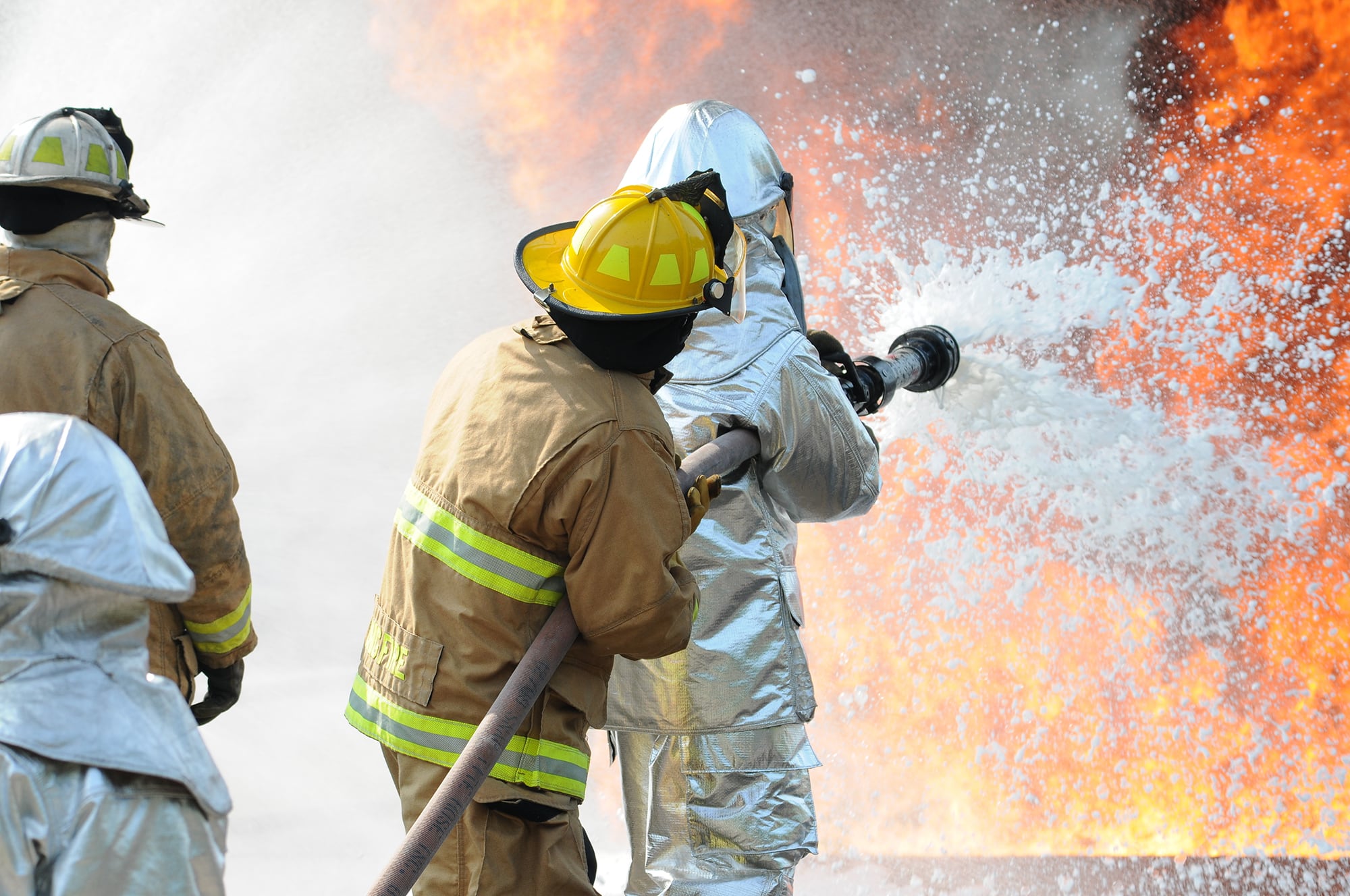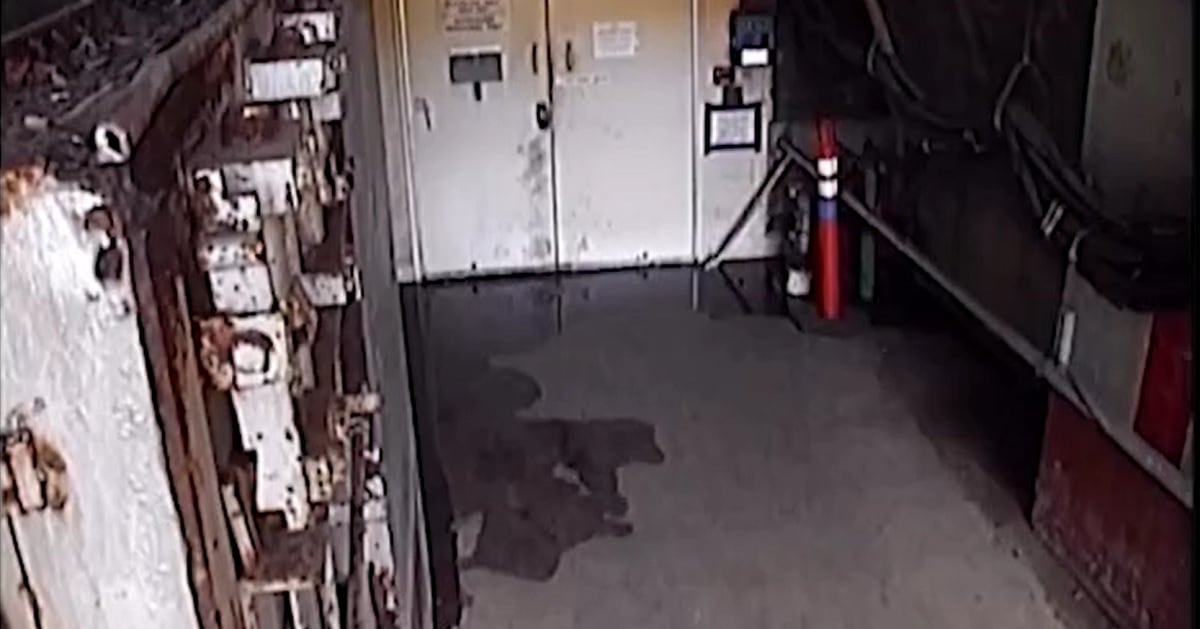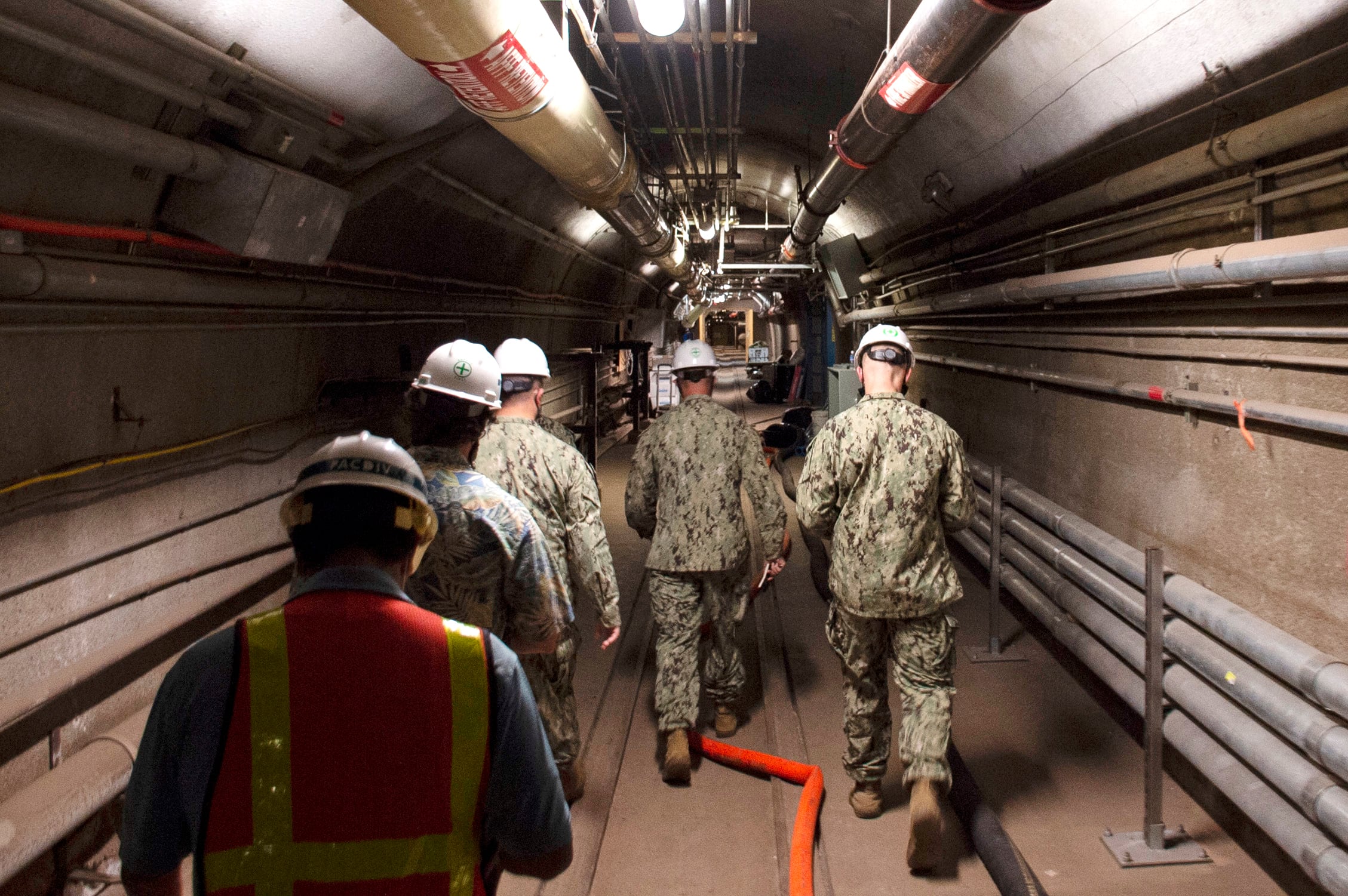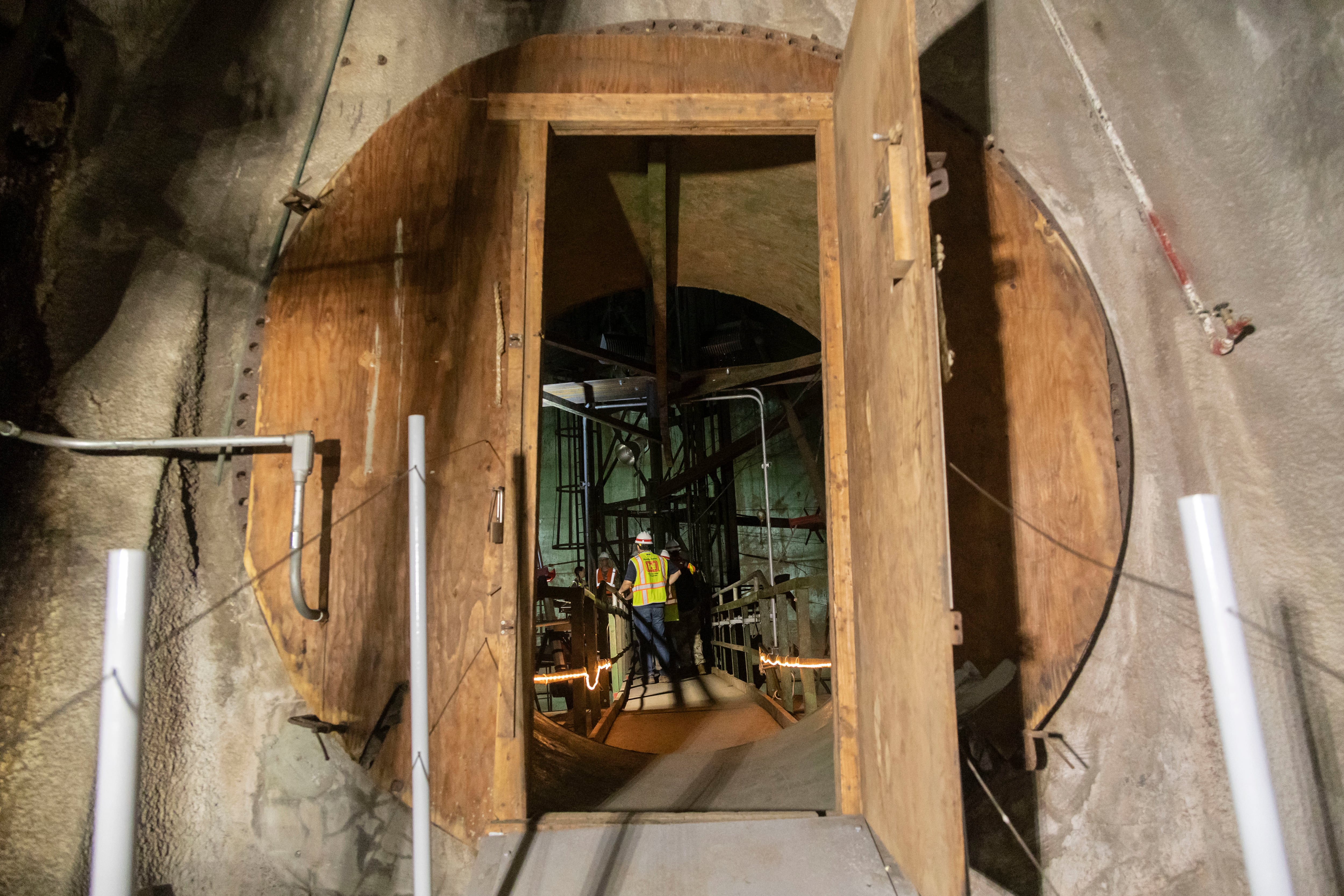A maintenance contractor’s error, and lack of adequate oversight by the Navy, led to the spill of 1,300 gallons of toxic fire suppressant at the Red Hill Bulk Fuel Storage site near Joint Base Pearl Harbor-Hickam, Hawaii, on Nov. 29, 2022.
Military investigators found that the contractor improperly installed an air vacuum valve on the system that carries Aqueous Film Forming Foam, used to suppress fires caused by flammable liquids, just inside the underground facility’s Adit 6 tunnel in April 2022.
The same contractor also failed to disable AFFF pumps from automatically starting prior to fire suppression system testing on Nov. 29, 2022, which led to an uncontrolled discharge of the toxic chemicals, investigators found.
The concentrate pooled on the floor inside the facility and then seeped under a door and onto a paved access road, as well as soil on the edge of the paved road outside of Adit 6. Federal firefighters, contractors and government civilians from JB Pearl Harbor-Hickam responded to the site and took actions to contain the release, including the removal of impacted asphalt and soil.
Aqueous Film Forming Foam, which is used to suppress fires caused by flammable liquids, contains perfluorinated chemicals, collectively known as PFAS. These so-called “forever chemicals” have been used across the military to battle aircraft and ship fires, and the Department of Defense has identified 400-500 military sites that have been contaminated by them.
PFAS, which are also found in household items such as nonstick cookware, stain repellents and food wrappers, have been linked to some types of cancer and birth defects, and may also affect growth and development, reproduction, thyroid function, the immune system and the liver.
RELATED

Notifications of the Red Hill leak were made that same day to the U.S. Environmental Protection Agency and the Hawaii Department of Health, as well as senior DoD officials, legislators and other stakeholders.

Navy groundwater monitoring sample results in the affected area after the November spill showed no violation of PFAS standards based on state and federal screening levels, Hawaii News Now reported.
Investigators also faulted the Navy’s quality assurance process for failing to identify and correct the improperly installed air vacuum valve in April 2022.
The leak of firefighting foam came almost a year to the day after the late November 2021 leak of jet fuel from the underground storage facility.
Hundreds of families on JB Pearl Harbor-Hickam and the Army’s Aliamanu Military Reservation and Red Hill Housing, reported petroleum odors coming from residential tap water supplied by the Navy water system. About 6,000 people were sickened after drinking the contaminated water.
In all, about 93,000 water system users were impacted, many of whom relocated to temporary housing during the crisis.
Following the fuel spill, the Hawaii Department of Health issued an emergency order requiring the Navy to shut down Red Hill and, in March 2022, Defense Secretary Lloyd Austin ordered that the fuel storage facility be defueled and permanently closed.
Austin established Joint Task Force-Red Hill on Sept. 30, 2022, to ensure the safe and expeditious defueling of the facility. Vice Adm. John Wade was selected to command the task force.
RELATED

After the leak of firefighting foam, Wade appointed Maj. Gen. Richard Heitkamp, deputy commander of the Army Corps of Engineers, to conduct a focused investigation to determine the cause of the leak.
During the Friday press conference to announce the investigation’s findings. Wade said that he believes stricter safeguards and more assertive Navy oversight should have been in place to reduce the risk of this type of mishap.
“I ordered this investigation to determine what caused the accidental release of AFFF concentrate and to reduce the risk of a future mishap,” Wade said, according to a Navy release. “A focused investigation allowed us to effectively determine how and why the release occurred. We used this information to immediately implement risk reduction measures across the entire facility and to notify the Department of Defense of actions that can be taken to further reduce risk in areas outside the purview of JTF-RH.
“The safe and expeditious defueling of Red Hill res our top priority to protect the people and environment of Hawaii.”
Shortly after the leak of the fire suppressant, U.S. Indo-Pacific Command directed that JTF-RH’s mission be expanded from overseeing the defueling to also include implementation of centralized management and safety controls at Red Hill, the Navy release noted. To execute these expanded responsibilities, more than 100 military personnel were added to the task force.

Since then, the task force has established physical control of fuel storage facility, according to the release. It manages the access points and oversees all security screening of personnel seeking to enter the facility. All tenance, repair and environmental remediation contractors who enter must now have a military escort with the knowledge to provide appropriate oversight.
The task force has forwarded its investigation to the Department of the Navy to review possible contractor liability for the inadvertent discharge, according to the release.
U.S. Indo-Pacific Command has also directed its components to review quality assurance mechanisms in place for oversight of maintenance and repair work by contractors on systems containing hazardous materials, the release states.
In addition, a 30-day review has been directed to: identify sources of HAZMAT or other substances, such as PFAS-containing AFFF, that present risk to human health or the environment; ensure controls are in place to protect the environment; and practice response protocols.
Navy Region Hawaii and Naval Facilities Engineering Systems Command continue to conduct environmental testing as they fully remediate the Red Hill site, the release states.
— The Associated Press contributed to this story.




